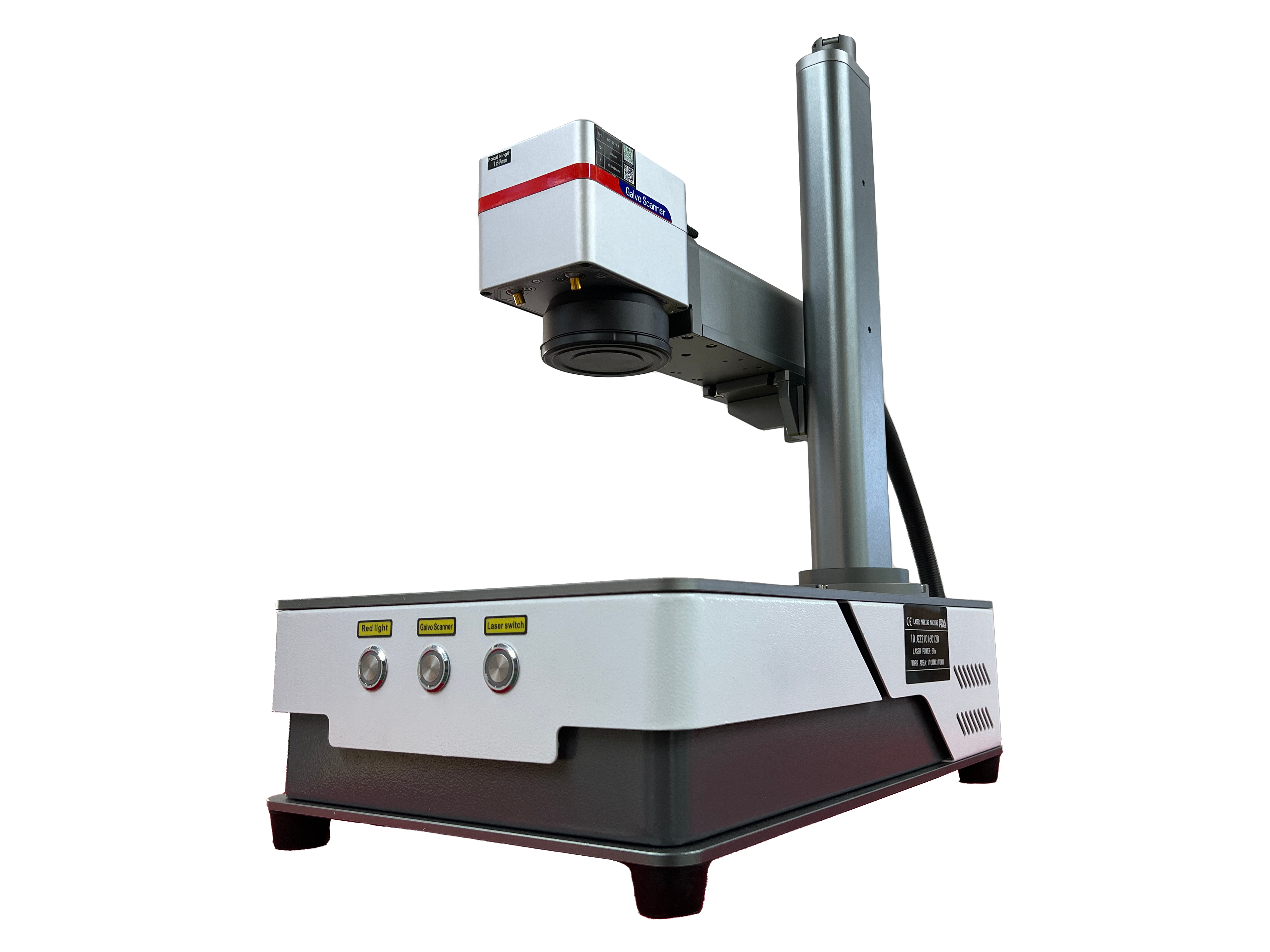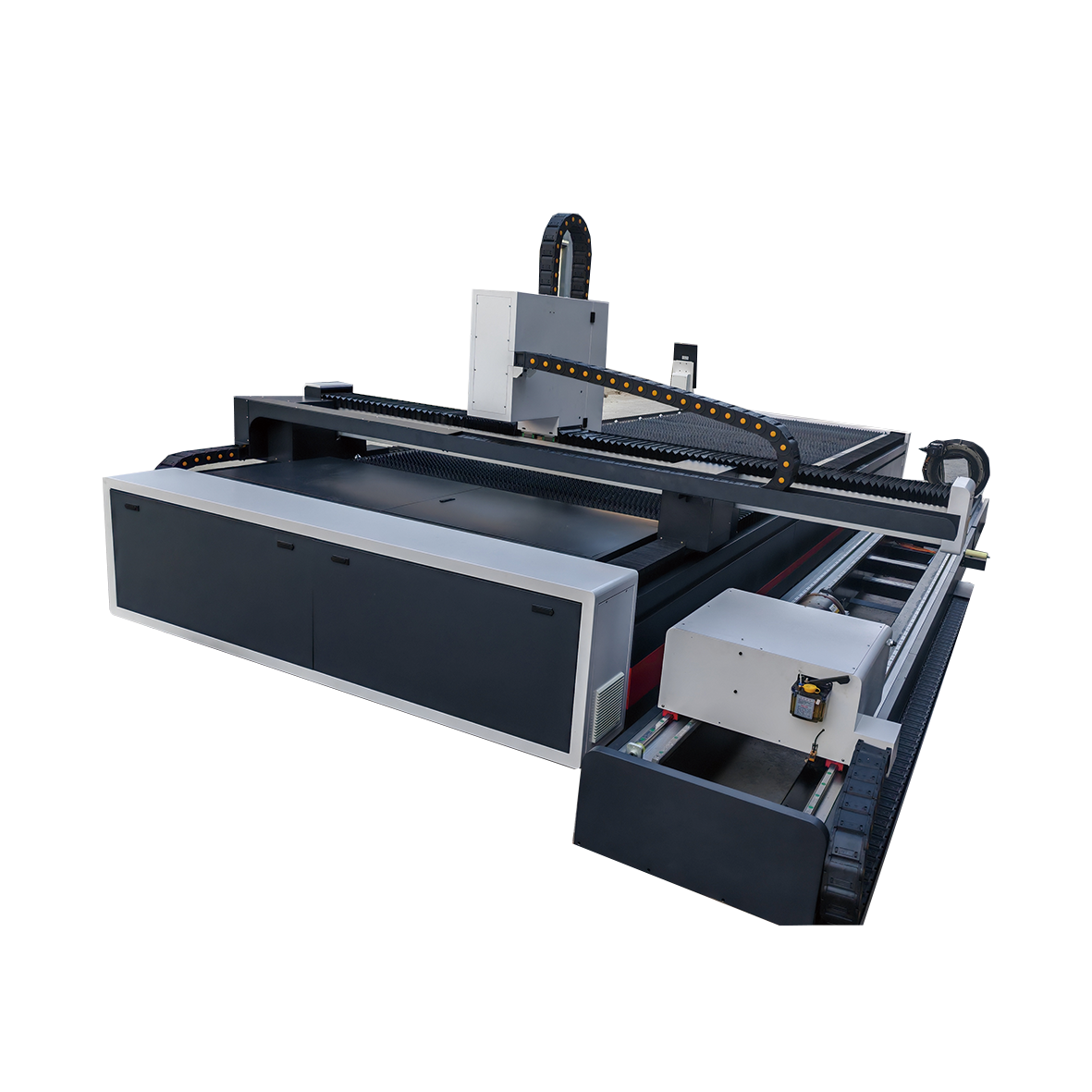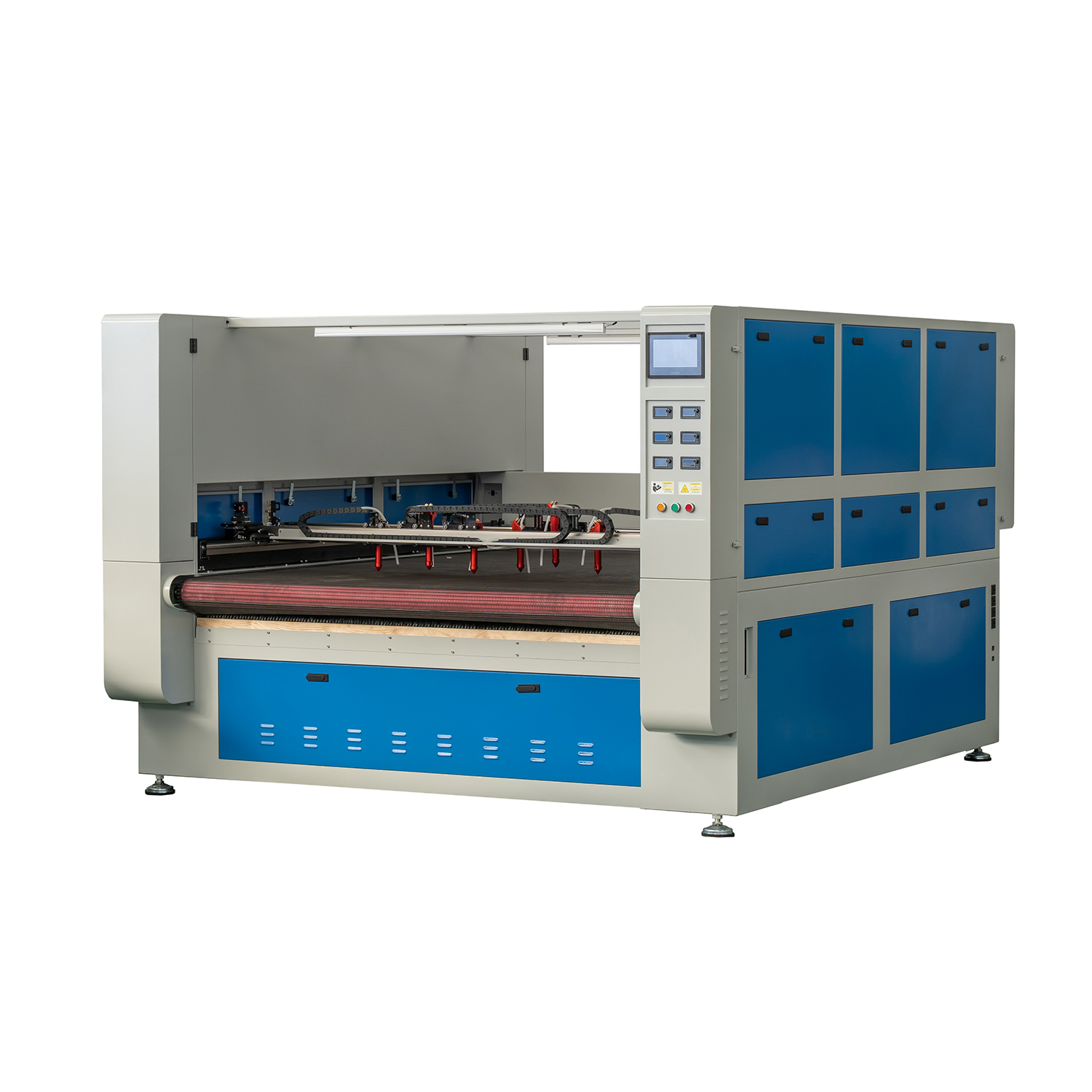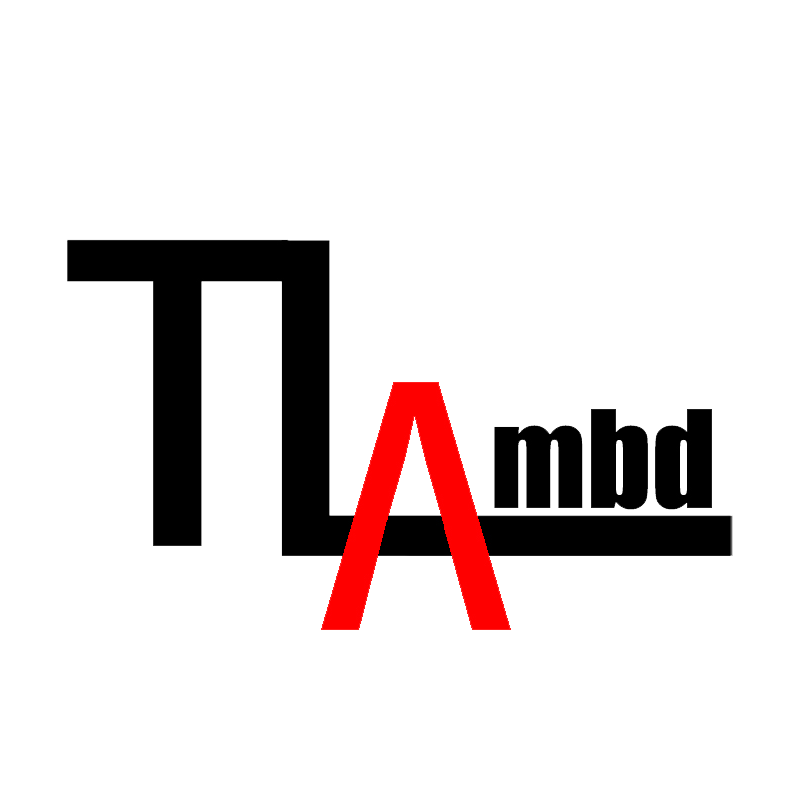Opportunities and Challenges in the Laser Industry: How to Break the Deadlock?
In 2024, the global manufacturing industry is fraught with difficulties. Looking at China's laser industry, it is still filled with challenges such as 'internal and external competition,' 'industry reshuffling,' and a 'winter in manufacturing.' Looking ahead to 2025, with increasing global political and economic uncertainties, factors such as de-globalization, trade wars, and geopolitical conflicts will trigger a new wave of revolutions in technological innovation, business models, economic systems, and industrial trends.
Facing these challenges, industry peers need to keenly observe market changes, seize new opportunities arising from the transformation and upgrading of traditional enterprises, shifts in consumer trends, and future industrial investments, focus on six future industries, and strengthen industrial chain upgrading, independent innovation, and resource integration. The industry should avoid 'involuted' competition, reinforce self-discipline in emerging business formats, and promote collaborative innovation between technological and business ecosystems. Meanwhile, enterprises should optimize their export structure, expand into emerging markets, and reduce dependence on single markets; through mergers and cooperation to integrate the industrial chain, they can achieve synergistic development and improve resource utilization efficiency. Laser enterprises should capitalize on opportunities in national strategic emerging industries, deepen technological innovation, and explore new business models and management strategies to achieve sustainable development.
The Rise of Value Wars: Building a Reasonable Industry Bargaining System
In recent years, with the rapid development of the laser processing industry, fiber lasers, as the core light source, have attracted significant attention regarding their pricing mechanisms and cost benchmarks. However, some market players gain market share through aggressive low-price competition, even selling products below reasonable cost, leading to a sharp decline in industry profit margins, insufficient R&D investment, and impacting overall technological innovation capabilities. In contrast, establishing a 'value battle' with product quality, technological advancement, safety, and service capabilities as core competitiveness is the key for the industry to achieve high-quality development. How to construct a reasonable industry bargaining system is an important issue at present.
The cost of fiber lasers mainly consists of the cost of core components (pump source, active fiber, optical elements, cooling system, etc.) accounting for about 60-70%, the cost of auxiliary systems (power supply and control systems, mechanical structures and enclosures, as well as assembly and commissioning, etc.) accounting for about 20-30%, and research and development and added value (such as technology patents, software algorithms, brand premiums, after-sales service, and channel costs, etc.) accounting for about 10-20%.
According to survey data from the Laser Processing Special Committee on certain leading companies, the material cost for high-power (3kW-10kW and above) fiber lasers used for industrial thick plate cutting (excluding R&D and added value) is approximately 6.5-7 RMB per watt. This benchmark is intended to provide the industry with a clear cost reference, prevent disorderly price drops caused by unhealthy competition, ensure reasonable profit margins for enterprises, and promote technological innovation and product upgrades.
The sustainable development of the fiber laser industry cannot rely on short-term price competition. Instead, it should return to the essence of the product, focusing on technological innovation, quality improvement, industry chain collaboration, and market regulation. By ensuring reasonable pricing, companies can maintain healthy operations and promote high-quality industry development. Only when industry peers reach a consensus on rational competition and genuinely shift from a 'price war' to a 'value war' can they secure a stronger position in the global laser industry landscape and contribute greater momentum to the upgrading of Chinese manufacturing.
Embrace new opportunities, drive new development
In 2024, the Ministry of Industry and Information Technology and several other departments jointly issued the "Implementation Opinions on Promoting the Innovative Development of Future Industries," proposing to focus on six major areas: future information, health, manufacturing, energy, materials, and space, to build highlands for future industry innovation. Among them, the development directions of future manufacturing include intelligent manufacturing, biomanufacturing, nanomanufacturing, and laser manufacturing, with a focus on breakthrough developments in key core technologies such as intelligent control and intelligent sensing, and the promotion of models like flexible manufacturing and shared manufacturing. These directions will accelerate the intelligent, efficient, and green transformation of the manufacturing industry. As a strategic cornerstone of the nation, China is advocating and providing policy support for the nationwide localization of laser manufacturing and additive manufacturing.
As global manufacturing moves towards refinement, intelligence, and sustainability, laser manufacturing, with its advantages of high precision and strong adaptability, is rapidly permeating precision manufacturing fields such as display panels, consumer electronics, and integrated circuits. Currently, the application rate of laser technology in China's equipment manufacturing industry is 30%, which still has room for improvement compared to manufacturing powerhouses like the United States, Japan, and Germany (over 40%). At the same time, the deep integration of AI and laser technology is driving a transformation in manufacturing. From intelligent manufacturing to healthcare, from optical communication to scientific research, the introduction of AI is making laser processing more intelligent and precise, creating entirely new application scenarios.
Advanced 'light' manufacturing empowers the low-altitude economy.The year 2024 is regarded as the inaugural year of commercialization for the low-altitude economy. As an emerging economic model, the low-altitude economy relies on technologies such as aviation, communications, and artificial intelligence, using drones and electric vertical takeoff and landing vehicles (eVTOLs) as carriers to drive transformation across multiple fields and industries. China possesses a complete industrial chain foundation in areas such as aircraft manufacturing, automobile parts, and civil drones. It is expected that by 2026, the scale of the low-altitude economy will exceed one trillion yuan, with a compound annual growth rate of 52.9% from 2026 to 2030, reaching a market size of two trillion yuan by 2030. From a city perspective, Shenzhen and Shanghai are taking the lead in promoting policies and building scenarios for the low-altitude economy, driving the Guangdong-Hong Kong-Macao Greater Bay Area and the Yangtze River Delta region to become highlands of the low-altitude economy. Nearly 30 local governments nationwide have introduced related support measures.
With advantages such as precise processing, intelligent sensing, and efficient communication, laser technology is gradually becoming a key driver of the low-altitude economy industry chain. It encompasses processes in aircraft manufacturing such as laser cutting, welding, additive manufacturing, and surface treatment, while also playing a critical role in lidar sensing, optical communication, and other areas. This deep integration of "light" and "air" signals the arrival of more disruptive application scenarios. China is expected to secure a commanding position in the global low-altitude economy competition and usher in a golden era of a trillion-yuan market.
Trends in the development of core light sources and devices. The development trend of lasers is characterized by "shorter pulses, shorter wavelengths, and higher power." Mainstream industrial lasers include: high-brightness, high-power semiconductor lasers (kilowatt level), high-power fiber lasers (up to 200KW), and ultrafast lasers represented by picosecond and femtosecond lasers (achieving kilowatt and joule levels) among others. In addition, the demand for lasers in special wavelength bands for medical and scientific research applications continues to grow. In the future, laser development will focus on high energy, long lifespan, beam quality, high stability, environmental adaptability, energy control, and low cost, concentrating on key components, beam modulation, beam shaping, and energy control, while extending to more new applications.
At present, fiber lasers and blue lasers are growing rapidly, and ultrafast lasers are driving advancements in high-precision manufacturing and micro-nano processing technologies. Domestic companies are gradually achieving localization of core components such as fiber lasers, reducing reliance on imports, but high-end technologies such as high-power laser control systems, galvanometer control systems, and high-power laser chips are still dependent on Europe and the United States. In the future, the localization of high-end components and breakthroughs in technology processes will become key focuses for industry development.
Laser Welding: An Important Support for High-End Manufacturing. The application of laser welding technology in high-end manufacturing and the new energy industry continues to deepen. In recent years, industries such as new energy vehicles, lithium batteries, and photovoltaic products—known as the "new three—have grown significantly, showcasing China's strength in the global green industry transformation. In 2024, China's production and sales of new energy vehicles reached 12.888 million and 12.866 million units respectively, representing year-on-year increases of 34.4% and 35.5%. With such huge market demand, industrial manufacturing technology needs to continuously iterate and break through.
In the manufacturing process of power batteries, laser welding is one of the key processes, widely used in battery case sealing welding, module welding, and tab welding. It is expected that in the next three years, China's new power battery production capacity will reach 1,500 GWh, driving the demand for laser welding equipment to about 40 billion yuan.
At present, laser welding can be used for metal-to-metal (same or different types), metal-to-nonmetal, plastic-to-plastic, glass-to-silicon, and other materials. In the future, the industry needs to overcome welding processes for highly reflective materials (such as copper, nickel, and silver), promote breakthroughs in blue light, green light, and composite welding technologies, and improve the welding stability of ultra-thin, ultra-thick, and dissimilar materials.
In addition, technologies such as ultrafast laser welding of opaque ceramic materials, long focal length green femtosecond laser glass welding, and ultrafast laser welding of optical and metal materials are suitable for high-end application areas such as precision manufacturing, semiconductor packaging, and biomedical devices, providing crucial support for future advanced manufacturing and advanced packaging technologies.
Laser Medicine: Competing in the "Hundreds of Billions" New Track. Laser technology has gradually penetrated the medical field, from diagnosis to treatment, as well as beauty and life sciences, with the market size growing rapidly. According to relevant data forecasts, the laser medical and health market has a scale exceeding hundreds of billions, covering multiple submarkets including dermatology, urology, ophthalmology, dentistry, vascular, gynecology, oncology, neurosurgery, photodynamic therapy, and medical aesthetics. The scale of China's laser medical industry has exceeded 30 billion.
In terms of policy, China has included the medical device industry as a key development area, adding momentum to the localization of laser medical technology. On the technological front, domestic companies continue to make breakthroughs in light sources and core optical components, gradually achieving large-scale production. In addition, the integration of laser medical technology with big data, artificial intelligence, and other technologies has enhanced the precision and intelligence of medical services.
Laser applications in the field of new energy. The application of laser technology in the new energy sector covers power battery welding, the manufacturing of electric vehicle power systems, electrode and tab cutting, laser cleaning, solar cell etching, fuel cells, and production, storage, and transportation systems. In the future, wind energy, photovoltaics, and hydrogen energy will become the core of the new energy system, electric vehicles will dominate zero-carbon transportation, and hydrogen energy will play a role in heavy trucks, shipping, and aviation.
The innovation goals of new energy battery technology focus on reducing costs, improving efficiency, and enhancing safety. The development of all-solid-state batteries has entered a critical stage. In addition, the rapid growth of the energy storage industry has driven the iteration of technologies such as lithium batteries, electrochemical storage, and sodium batteries, and has integrated with technologies like 5G and artificial intelligence to build an intelligent energy management system. The demands for lightweight and safety in new energy vehicles will further promote the application of high-strength alloy materials, as well as the development of high-brightness laser cutting and welding technologies.
At the same time, laser welding offers advantages such as high welding quality, low material cost, high productivity, and good sealed processing in non-contact operations, making it an important method for the mass and low-cost production of bipolar plates. According to the "Energy-Saving and New Energy Vehicle Technology Roadmap 2.0," it is predicted that by 2050, the number of fuel cell vehicles will reach 5 million, and the demand for bipolar plates is expected to reach 1.5 to 2.5 billion pieces. The booming trillion-level hydrogen energy market is driving the growth potential of the billion-level "laser" application market.
Laser Additive Manufacturing and Remanufacturing. In 2024, China's additive manufacturing industry will surpass 50 billion yuan in scale, with a year-on-year growth of 25%, and it is expected to reach a market of 100 billion yuan by 2027. Currently, the application of additive manufacturing is accelerating and covers nearly 40 major industry categories in the national economy. In the future, laser additive manufacturing technology, primarily using metal materials, will continue to advance from single materials to multiple materials, new structures, and multifunctional directions; the material hierarchy will move toward the production of metal components with high melting points and high-hardness alloys, as well as the direct manufacturing of single or multiple alloys in mixed and multi-layer forms. Manufacturing performance will evolve toward high precision, high performance, and the production of complex parts capable of withstanding large stress and heavy loads.
However, laser additive manufacturing still faces numerous technical challenges, such as difficulties in controlling temperature fields and flow fields, uncontrollable phase change properties, balancing deposition efficiency and precision, suppression of cracks and defects, and improving quality control and traceability, all of which are key areas for future research.
The multi-energy field laser composite surface modification technology combines lasers with other energy fields to compensate for the shortcomings of single laser processing. It has become an important development direction for the modification and remanufacturing of key components and is widely used in fields such as aviation, aerospace, energy, and shipbuilding. This technology can significantly improve product performance and lifespan while achieving quality improvement, cost reduction, and efficiency enhancement. It mainly includes composite methods such as laser-supersonic composite manufacturing, laser-electromagnetic field composite manufacturing, laser-ultrasonic energy field composite manufacturing, and laser-electrochemical composite manufacturing.



Post time: 10-24-2025





